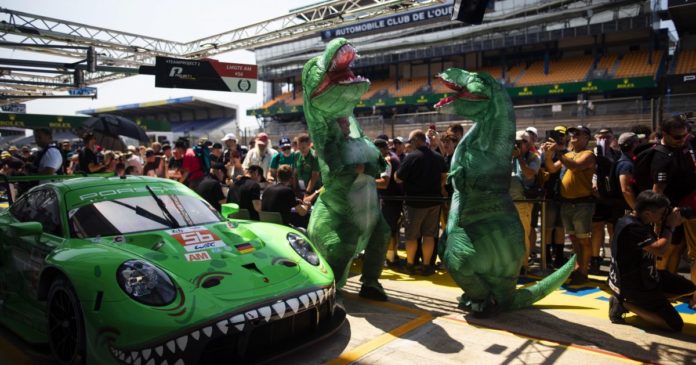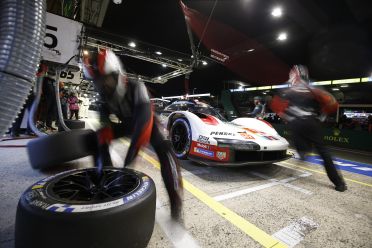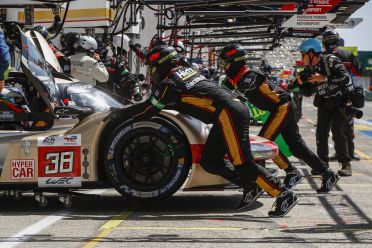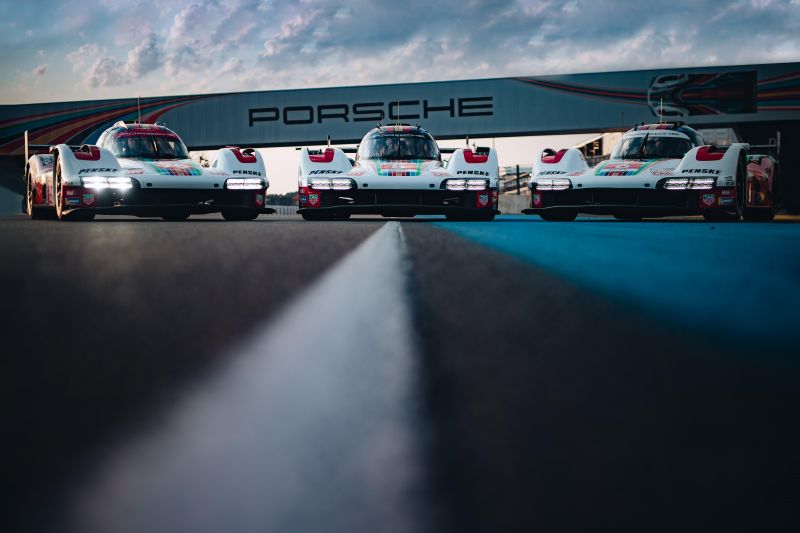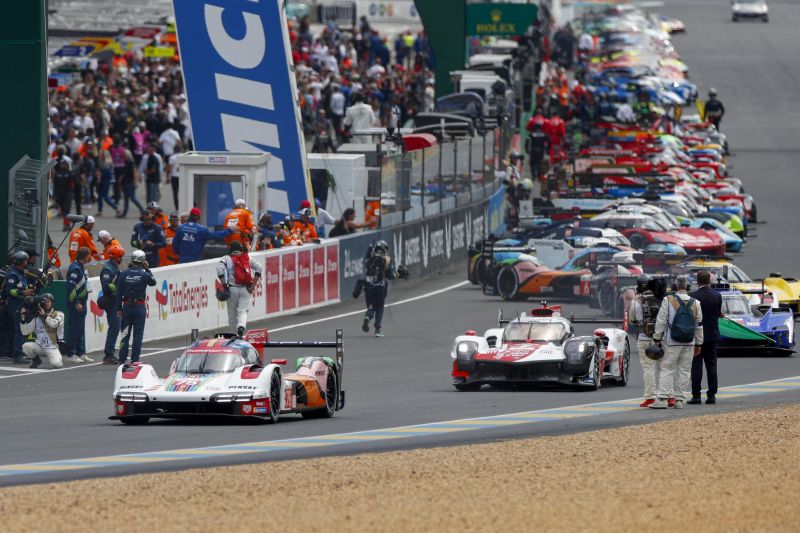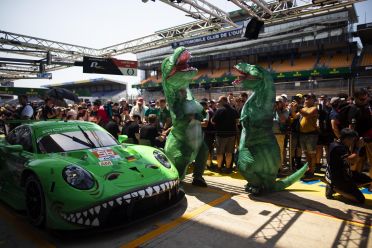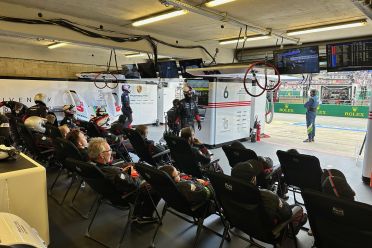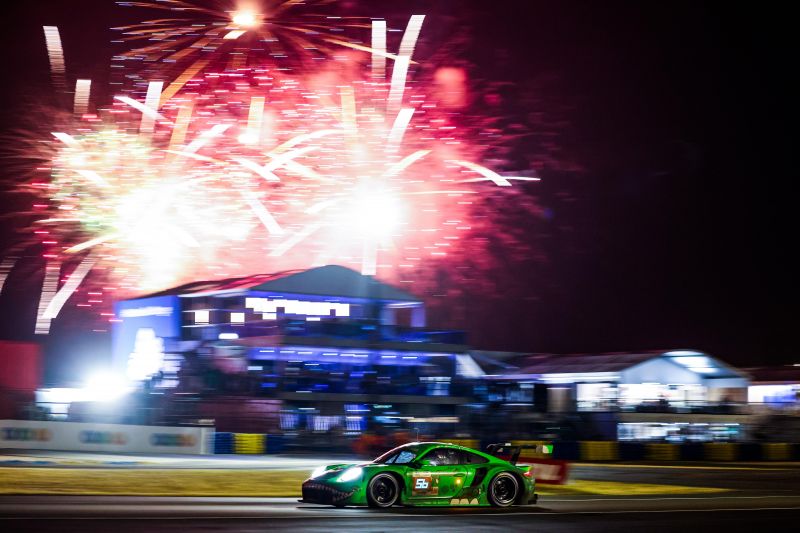Motorsport fans the world over are familiar with the 24 Hours of Le Mans endurance race.
For those of us in Australia, the tyranny of distance and a lack of connection to the World Endurance Championship (which is essentially one level below Formula 1 in technicality), has meant the world-famous race in France is seldom top of mind.
It really should be.
Speaking as a Formula 1 fanatic that has attended plenty of different races over many years, none compare to the overall experience of going to Le Mans.
Before we go into why, let’s look at some basic history.
What is the 24 Hours of Le Mans?
The original race was held on public roads south of the French city of Le Mans that mixed forests and passed residential areas.
Since then the circuit has changed a bit for safety reasons, but consists largely of the same roads and areas as always. All up, it’s a 13.6km track that offers plenty of opportunity for cars to fail and drivers to make a simple but costly mistake.
This year’s race marked the 100-year anniversary of the 24 Hours of Le Mans with the very first being held in May 1923 (technically it’s the 91st running of the event due to a few missed years during World Wars). It had the second-highest attendance of any race at 325,000 spectators, bested only by the event held in 1969 which claimed over 400,000.
From the outset, the idea has been to create a race that would entice manufacturers to show not just outright speed as is often the case with Formula 1, but the capability for their vehicles to actually last the full 24 hours.
The spirit of that hasn’t changed over the 100 years and there have been some notable races at Le Mans where the leaders have succumbed to reliability in the cruelest of ways right at the very end.
For example, Toyota lost the race in 2016 due to reliability issues with just 10 minutes to go.
The history of Le Mans is extensive and has led to a great deal of innovations, some of which have stuck like advanced aerodynamics, Jaguar making disc brakes popular, and Porsche debuting the dual-clutch transmission on the 1986 962C Group C prototype that won Le Mans that year.
There have also been even more quirky ideas, like running gas turbine-powered race cars.
All in all, unlike Formula 1, the idea with Le Mans has always been to lead by innovation with manufacturers enjoying significantly more freedom from regulations.
As part of WEC, this year the main class is called hypercar (replacing LMP1) and the rules basically allow anything that makes 500kW, hybrid or not and weighs at least 1030kg.
Compared to F1, the regulations are far more relaxed for aerodynamics as well, which allows designers to create unique cars based on performance windows. This is why some of the hypercar class cars have no rear wing, relying on ground effects.
Plenty have tried to win Le Mans and very few have succeeded. The most successful manufacturer at Le Mans in terms of overall victories is Porsche, which has taken 19 outright wins, including seven in a row from 1981 to 1987. If you include its overall class victories as well, it brings the total to a staggering 107 wins at the famous circuit.
To win 19 times in LeMans since first entry in 1966 is a huge achievement by the German manufacturer and really does speak to the heart of what the brand stands for.
Celebrating its 75th anniversary in 2023, Porsche entered three factory Porsche 963 hypercars in this year’s event but unfortunately ran into all sorts of trouble throughout the race and finished outside of the top 10.
Talk of Porsche going into Formula 1 in the future seemed all but confirmed until Red Bull pulled the plug in favour of Ford but for now, the iconic sportscar maker is well ahead of its nearest rival in Le Mans victories.
| Porsche | 19 |
|---|---|
| Audi | 13 |
| Ferrari | 10 |
| Jaguar | 7 |
| Bentley | 6 |
| Toyota | 5 |
| Alfa Romeo, Ford | 4 |
| Peugeot, Matra-Simca | 3 |
| Bugatti, Lorraine-Dietrich | 2 |
| Aston Martin, BMW, Chenard & Walcker, Delahaye, Lagonda, Mazda, McLaren, Mercedes-Benz, Mirage, Renault-Alpine,Rondeau, Sauber-Mercedes, Talbot-Lago | 1 |
Why you should do Le Mans at least once
If you love motorsport, this is something you need to do at least once in your life. The build up to the event saw the entire city of Le Mans overtaken by fans and teams with a huge influx of people all there to experience the wonder of the historic race.
The atmosphere is truly surreal and the best part is, unlike F1 which has recently started to attract the ‘Netflix’ crowd (as we OG F1 fans call them), Le Mans is for the true die hard fans that travel long distances to enjoy the racing, not to be seen on social media.
This year’s race was full of every sort of dramatic moment you could imagine, with plenty of crashes, heartbreak and retirements for teams like Porsche to the joyous victory of Ferrari on its return to LeMans after more than 50 years. You can read our Le Mans race report here.
Trying to explain to my Formula 1-loving wife why we should go to the 24 Hours of Le Mans together one year is met with an immediate comment of “do they actually race for the whole 24 hours?” Why yes, they do and it brings a really interesting element to racing.
In Formula 1, the spectacle is a roughly two-hour event made for TV and races like the one in Melbourne put on a great show for the whole weekend’s entertainment, but what if the actual race was the entertainment?
What if there was no need for supporting categories because they actually race with the fastest cars at the same time, for 24 hours straight!? What if the cars actually raced and overtook each other, constantly?
Apart from the Hypercar class, you will also find LMP2 (Le Mans Prototype 2), LMGTE and the ‘innovative car’ class also in the event, which this year totaled 62 entries across the board. If you’re wondering how that works, it’s a very good question because you have cars that are genuinely 20 seconds a lap faster than others.
The fastest lap of the circuit during qualifying was 3:22.982 set by the Ferrari 499, compare that to 3:32.923 by the fastest LMP2 car and then 3:52.376 by the Corvette Racing in GTE. That delta is enormous and it means the fastest cars have to overtake literally dozens and dozens of cars per lap.
Can you imagine the potential spectacle that this would create for 24 hours straight? Where cars are overtaking each other constantly? Come rain, sunshine, darkness… there is no need to imagine, because it’s a real thing and it happens every year at Le Mans.
We are told by those that should know that almost 85 per cent of the lap around Circuit de la Sarthe is at full throttle, designed specifically to put as much stress on the engine and drivetrain as possible.
Apart from the actual racing, which is genuinely amazing to watch for each and every lap (although the safety car periods can take a lot longer than us F1 fans are used to), another reason the 24h race works so well for motorsport fans is that you literally have an entire day to get around the track and find new places to watch the race cars fly past.
The track is so long and the corners so many that you will likely not run out of interesting places to visit. We do highly recommend the ‘Porsche Curves’ as a viewing area.
Some stay up for the full event or sleep at the circuit itself, but despite our best attempts on numerous occasions of attendance, it is a feat we have yet to accomplish. Something to try next time.
Given the race starts around 4pm local time and ends at 4pm the next day, it gives you the opportunity to watch the first few hours which are often full of drama, then have a few hours of sleep and get right back into it. The tension really starts to build as the hours start to count down.
There is the usual entertainment and merchandise area (which unlike F1, seemed to offer some reasonably priced items) and the grid walk allows you to basically get up and touch the car, something that really surprised us given the amount of delicate carbon fibre on the cars, but it’s all part of the show, making it accessible to actual fans.
During our time at this year’s Le Mans, we met plenty of fans from all over the world and each and every one of them presented a big smile backing their teams across multiple categories.
Given it is in Europe where public transport is a thing, there are plenty of ways to get to Le Mans from almost any nearby city.
From Australia it makes the most sense to fly to Paris and catch a train which will take about two hours at most. However if you happen to fly into Germany and do the Porsche museum while you’re at it, it will only add to the trip.
There is nothing truly like the 24 Hours of Le Mans and if you love motorsport, be it any category, this is a race for you as it appeals to so many different tastes and categories. It’s a fair distance away from Australia but if you’re over F1 delivering boring races at exorbitant ticket prices, Le Mans is the answer and it’s definitely one of those things you have to do at least once.

